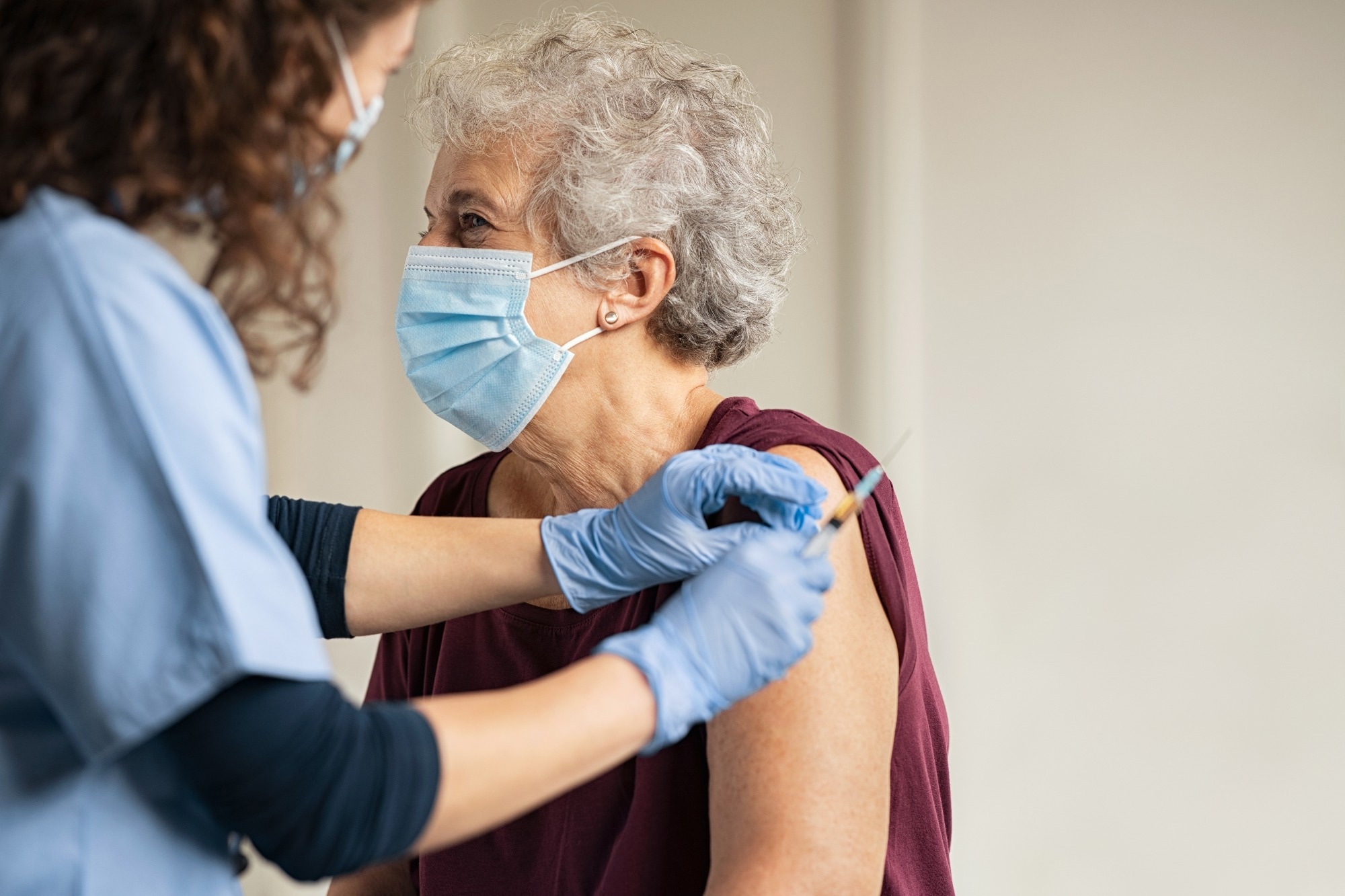In a recent study published in eClinicalMedicine, researchers evaluated the epidemiologic, clinical, and economic value of a universal coronavirus disease 2019 (COVID-19) vaccine under varying circumstances, such as the advent of a new coronavirus, using a computational simulation model.
 Study: The potential epidemiologic, clinical, and economic value of a universal coronavirus vaccine: a modelling study. Image Credit: Ground Picture/Shutterstock.com
Study: The potential epidemiologic, clinical, and economic value of a universal coronavirus vaccine: a modelling study. Image Credit: Ground Picture/Shutterstock.com
Background
Before severe acute respiratory syndrome coronavirus 2 (SARS-CoV-2), two other viruses of the genus betacoronavirus, SARS and Middle East Respiratory Syndrome (MERS), had caused epidemics in 2002 and 2012, respectively.
So, a novel coronavirus might emerge, necessitating the development and stockpiling of a pan-coronavirus vaccine that could confer at least partial protection against it.
In fact, if such a vaccine existed, it would have saved many more lives before the rollout of the first COVID-19 vaccine in December 2020.
A thorough search on the MEDLINE database via PubMed for studies focused on the technical aspects of COVID-19 vaccine development, e.g., its biological targets, published through March 2023, revealed that studies have not yet evaluated the epidemiologic, clinical, and economic value of a universal coronavirus vaccine.
About the study
Therefore, in the present study, researchers simulated and evaluated universal and strain-specific coronavirus vaccines using a computational model amid the spread of coronaviruses with varying transmission potential.
This model used data from the United States (U.S.)-Centers for Disease Control and Prevention (CDC) and observational studies conducted during the COVID-19 pandemic.
It represented the spread of a new coronavirus in the U.S. population and its subsequent clinical and economic outcomes, such as hospitalizations, deaths, direct medical costs, total societal costs, quality-adjusted life years (QALYs) lost, and productivity losses.
The model considered three age groups: children, adults, and older adults aged ≤17, 18–64, and ≥65.
Further, it represented how people interacted with each other and the different compartments that individuals can be in on a given day, such as susceptible (S), exposed (E), and infectious (I) based on symptoms.
These compartments represent different stages of SARS-CoV-2 infection an individual can go through.
The model also included equations that govern how and when individuals move among these compartments.
For instance, a transition occurs when the susceptible individual interacts with an infectious individual, with both symptomatic (Is) and asymptomatic (Ia) individuals contributing to the virus transmission.
A higher virus reproduction number, R0, indicates a virus with greater transmission potential.
In this study, they varied the R0 of the virus and the probability of different clinical outcomes to simulate different types of coronavirus epidemics.
Every time a person becomes infected with the virus, they pass through a submodel that considers both clinical (symptoms and effects) and economic outcomes.
For instance, they quantified health effects using DALYs, which combined years of life lost due to premature mortality (YLLs) and years of life lived with disability (YLDs).
The computed health effects, medical costs, and productivity losses helped the researchers determine the cost-benefit and cost-effectiveness of a pan-coronavirus vaccine. Herein, they accounted for the third-party payer as well as societal perspectives.
The study's experimental scenarios considered different vaccine availability scenarios, including no vaccines, a pan-coronavirus vaccine, and a strain-specific vaccine.
Results
The study model simulated the use of a pan-coronavirus vaccine in different circumstances.
First, it simulated, had a pan-coronavirus vaccine been available as a standalone intervention in a pandemic similar to 2020 conditions (R0 2.5), how many coronavirus infections, hospitalizations, and deaths it would have averted and at what cost.
A pan-coronavirus vaccine with efficacy as low as 10% (where efficacy does not wane and 25% of the U.S. population receives the vaccine within two months) would have saved $27.8 billion in direct medical costs, $18.3 billion in productivity losses, and $41.2 billion in societal costs.
Moreover, on average, it would have averted 14.62 million infections, 1.28 million hospitalizations, 403,000 deaths, and 23 million DALYs (p-values ≤0.0003).
Second, in future outbreaks with R0 as high as five, a pan-coronavirus vaccine would have become more effective, potentially averting (at 30% efficacy), on average, as many as six million infections, 2.2 million hospitalizations, 592,300 deaths, 39.6 million DALYs, saving $46.3 billion in direct and $18.7 billion in productivity losses, and $64.9 billion in societal costs (p-values ≤0.0031). Higher risks of severe clinical outcomes would have further increased its value.
Third, a delay of three or more months in the availability of a specific vaccine with an efficacy of 90% after the onset of a pandemic would have made a pan-coronavirus vaccine more clinically and economically valuable.
For example, a pan-coronavirus vaccine with 10% efficacy (that wanes) still would have saved $16.2 billion in societal costs amid a delay of six months of a specific vaccine.
Thus, the ceiling for investment into developing and stockpiling universal coronavirus vaccines is high, especially for a virus with very high R0 (transmissibility).
Conclusions
Overall, the study simulation showed that a pan-coronavirus vaccine would be cost-saving as a standalone intervention even at efficacies as low as 10% and coverages as low as 10%.
It would remain cost-saving even when a strain-specific coronavirus vaccine gets delayed by at least four months.
This data can give enough impetus to the funders, researchers, and vaccine manufacturers to develop and stockpile a universal vaccine for future outbreaks.
More importantly, it can help outline the vaccine characteristics to aim for during development.